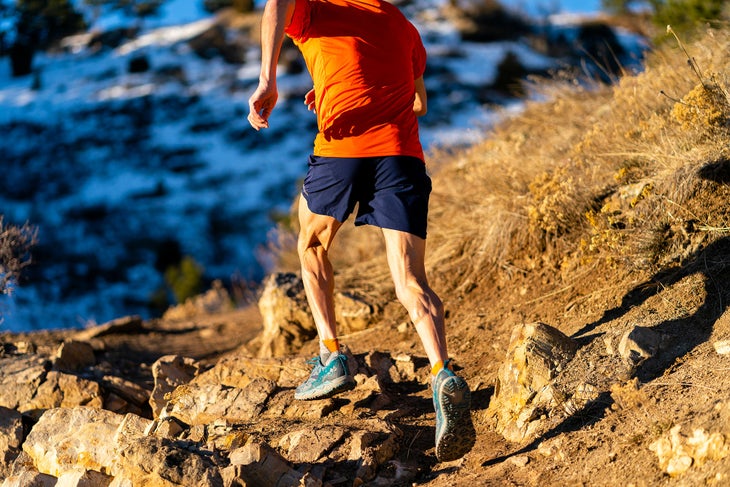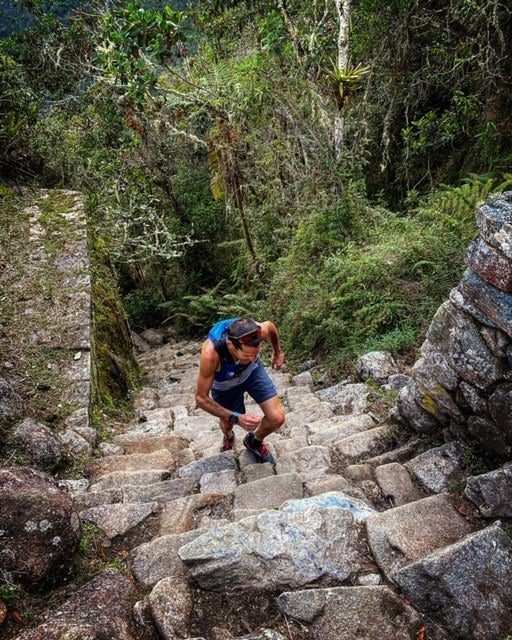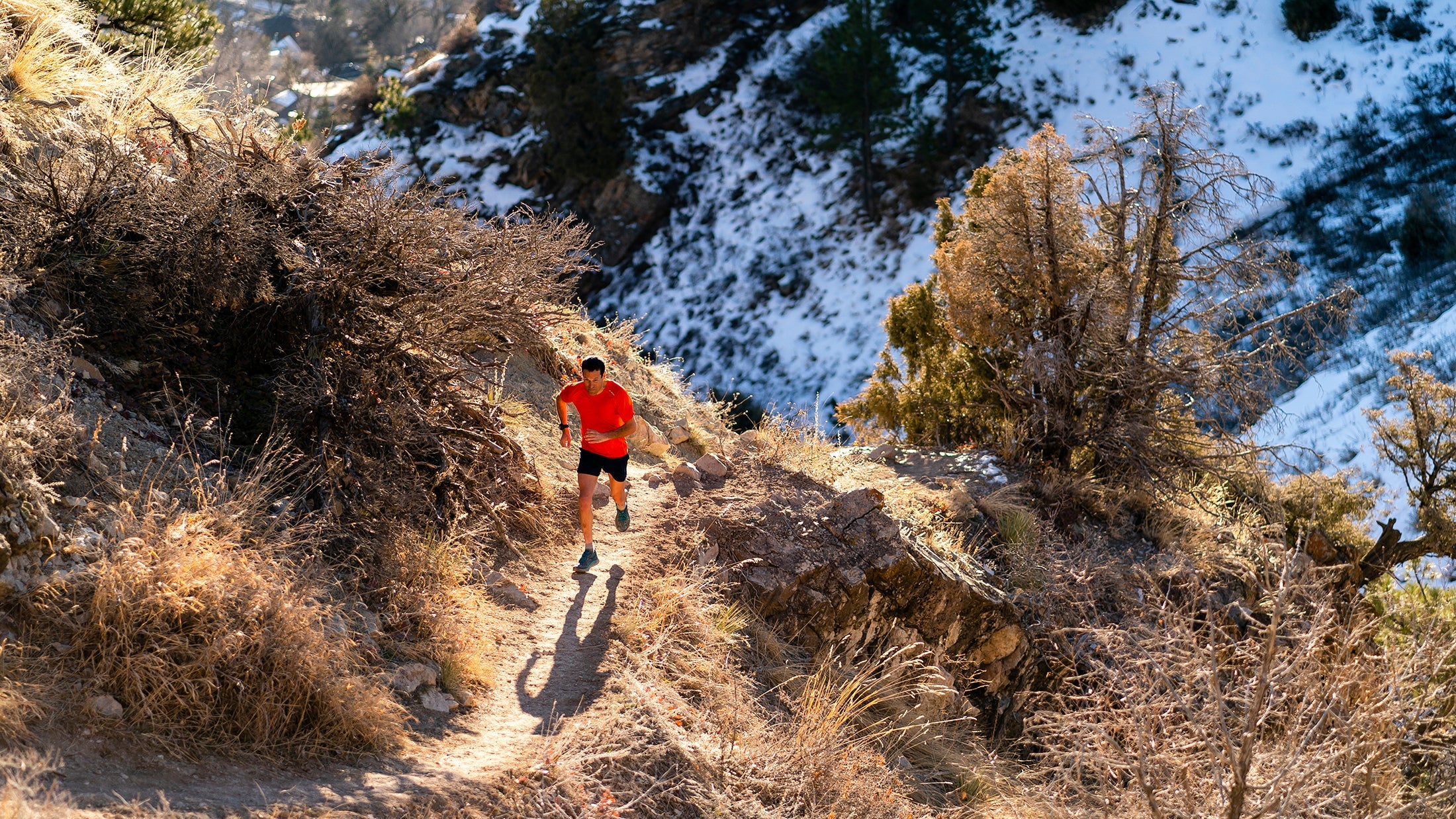I’ve always been impressed with my friends who excelled in the Vertical Kilometer (VK) or who could smoke race fields on the ascent portion of a course. Running uphill is all about being strong, fit and determined, and watching someone like Kilian Jornet or Morgan Arritola bound up hills that are seemingly steep enough to scrape your nose is really a thing of beauty. I wanted some of that.
Late last year, as a relative Strava-newbie, I noticed the amount of vertical a friend ran, mostly from his home in Issaquah, Washington. That sent me to my own tally, which was nearing 300,000 vertical feet for 2018. With that in mind I did two things: Pushed to top off that 300,000 year, and resolved to exceed 365,000 in 2019.
I figured it was worth a year-long experiment to see if pushing the climbs would bestow strength and fitness benefits on my skinny little legs and aging cardio capacity. By late summer I knew I had given myself an easy-to-achieve goal and so bumped up the annual total to an even half million vertical feet.
Injury Proofing
One of the more desired side effects or, “positive externalities” of hill training is that the strength and fitness gains come at little cost in the sense that it is rare for uphill runners to incur an injury. Climbing up hills conditions your whole body and taxes the cardiovascular system without the trauma of flat, fast pounding and high mileage. The pumping required to ascend steep terrain even works the upper body.
The strength gains of uphill running, especially when paired with squats, dead lifts, lunges and other leg day “fun” in the weight room, were incremental yet detectible. The more noticeable effect, however, after several months of pushing the climbs, was that I could do it day after day, not even taking breaks or lighter days—without getting injured.
While I was in a constant state of fatigue and soreness from my determined quest, I was never so tired or whacked that I was unable to string together another day of running up one of the hills I had in my backyard or whatever distant slope I could find when I was traveling. In essence, the vertical challenge was injury-proofing me, even as a 53-year-old, has-been ultrarunner with a lot of miles on my odometer.

Slow but Steady
One thing about running up hills, especially steep ones, is that you don’t really “run” them; at least not the steepest of sections. I got my powerwalk down and learned to alter between swinging my arms, pushing on my quads or taking lots of little dancing steps when I felt I had no excuse but to run.
A surprising effect of chasing vert was that I found myself seeking the most slanted of slopes, like ski runs in summer or paraglider access trails that yielded the best grade for dramatic ascents. What started out earlier in the year as longer runs racking up 1,000 feet of gain later became six or seven mile runs netting more than double that in ascent. Yet, perhaps sadly, despite the decrease in distance, the amount of time on foot actually grew.
Yes, I was getting slower but speed or distance were superfluous to me: My sole goal was to amass as many feet of up as I could in as long as I had before I needed to get to work or to move on to whatever was next on my schedule in any given day.
I had steeled my legs to weather the endeavor day in and day out. I had become hardened to pursue my objective with Ahab-like, monomaniacal zeal. Vertical ascent had become my whale, no matter how slowly I needed to hunt my Moby of uphill.
What Goes Up…
Most of my runs were round trips and so, yes, my downhill running got better too as the year progressed. My quads took a pounding, but were made stronger as the result. And my technical skills improved as well, because I often ran down rocky or slick trails that demanded agility. I couldn’t afford a fall, as it would only get in the way of more vertical, right?
The odd thing is that as my legs got stronger from the accumulated effort I didn’t put on any weight or mass. While I had hoped the gym efforts and constant ascents would help pack on some muscle and restore the thicker legs of my collegiate soccer days, that never occurred. Yes, I was able to lift more weight or do more reps at the same weight. But the ups and downs didn’t pack on any pounds. In fact, the increased effort as I began to average over 10,000 vertical feet per week took off a couple pounds I didn’t really have to spare.

Fait Accompli
I hit my goal of 500,000 feet by early November and, for the remainder of that week, celebrated by running flat routes I had missed. I had thought I’d gravitate toward runs with less relief but, to the contrary, found myself pulled towards the hills after only a few days away from climbing. The faster, longer days of flat, with an increased portion of road over trail, put my legs in a knackered state and I could “feel the niggles coming on”—as they say Down Under—and so I shifted right back to my hilly trails for fear of injury.
I ended the year with 572,000 feet of vertical, topped off by some epic climbs around Machu Picchu during the holidays.
The one change I know I’ll want to make in 2020 is to run watch-free, so I don’t have to know how slow I’m going. Only then I’ll be that much later for work in the morning … or afternoon.


